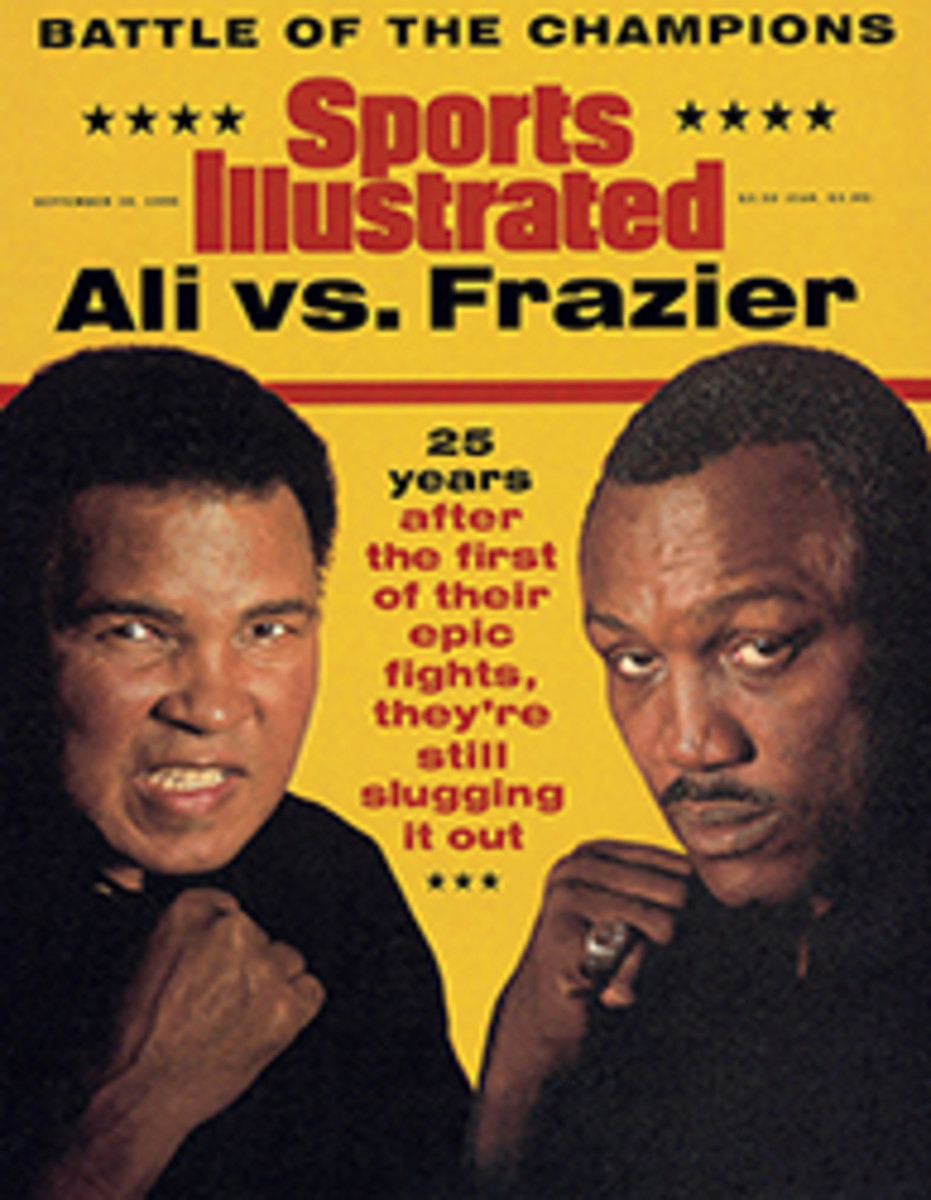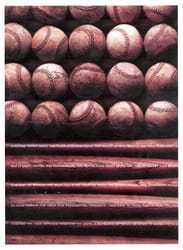
MORE BUMPING AND BANGING THAT (AND TONIER FANS) DISTINGUISHES PICKUP TRUCK RACING FROM THE WINSTON CUP
Tucson's Raceway Park is the sort of nondescript speedway that
drivers steer through on their way up from dirt tracks to
Daytona. The oval, set in the Sonoran Desert, is a
claustrophobic three eighths of a mile, the bleachers are of
unpainted aluminum, and the dusty gravel parking lot is only a
sandstorm away from being reclaimed by saguaro and sage.
But following Ron Hornaday Jr., a 20-year NASCAR veteran, around
the pit area before a race, you don't get the impression that he
is slumming. Nor are any of his fellow drivers. The stands are
packed with 6,000 fans. An ESPN crew is setting up. And the dry
air thrums with the sound of engines being tuned, perhaps
Hornaday's favorite sound in the world. "If it wasn't for
these," he says, pointing to the vehicles being adjusted, "I
wouldn't be here."
Here is the NASCAR Craftsman Truck Series, a $4 million circuit
in which the stars are pickup trucks. "Truck racing is more like
Saturday-night racing than the Winston Cup," Hornaday says,
referring to NASCAR's elite level.
Moments later the 200-lap race starts, and trucks going up to
100 mph smash into each other on the tight turns so often that
the event seems more like a demolition derby than a NASCAR race.
It's ironic, given the crowd's enthusiasm for collisions, that
one of the reasons NASCAR embraced truck racing was to appeal to
more upscale fans. Pickups, the best-selling models in the U.S.,
were an obvious and smart choice. The combination of NASCAR's
stereotypical motorhead crowd and the designer-jean set added up
to 57,000 spectators at the series championship in Phoenix last
October. As Dennis Huth, NASCAR's vice president for
administration and its truck-race marketing guru, says, "Trucks
are where it's at."
"I saw a chance to bring NASCAR racing to major new markets all
over the country," says Richard Childress, who is fielding a
truck-racing team, as well as Dale Earnhardt's Winston Cup team.
(Earnhardt has his own truck-racing syndicate, with Hornaday as
his driver.) The series, in its second year, goes to states such
as Washington, Oregon and Colorado, which the Winston Cup may
never visit. As a result, Childress says, "trucks are bringing a
new group of heroes to NASCAR."
Heroes such as Hornaday, 38, a second-generation stock car
driver who bounced around mom-and-pop tracks before being called
to drive for Earnhardt. Hornaday finished third overall in the
20-race 1995 series, earning $296,715. This year NASCAR expanded
the series to 24 races, and after 18 events Hornaday is leading,
with four victories and $312,375.
There are no traditional pit stops in truck racing. Instead,
races are halted at the midway point for a 10-minute
intermission. That makes for different tactics before and after
the break. "You hang back a little and don't show everything
you've got in the first half, because we don't start racing for
money until after intermission," says Hornaday. Halfway through
he is running third.
Mike Skinner, the 1995 series champion, moves into a precarious
lead early in the second half. So tight is the track that
Skinner, Hornaday and Rich Bickle wail through a seemingly
perpetual left turn, at 85 mph, staying only inches apart. The
crowd is intent now, focusing less on crashes. It's as if the
first half of the race was the lighthearted opening act and the
second half is the drama the fans all came to see.
Then, suddenly, it's over. Hornaday is not able to get past on
the inside line. Skinner wins by .8 of a second, and his pit
crew douses him with bottled water.
As Raceway Park empties out, thousands of pickups--the ones
carrying new NASCAR fans, not racers--line up to leave the
parking lot on their way back to Tucson.
Martin Dugard, a freelancer from Rancho Santa Margarita, Calif.,
does not own a pickup--yet.
TWO COLOR PHOTO: NATE MECHA/HSP Hornaday (in 16), once a dirt-track driver, leads the Craftsman series. [Ron Hornaday Jr.; Ron Hornaday Jr. driving truck in race]

